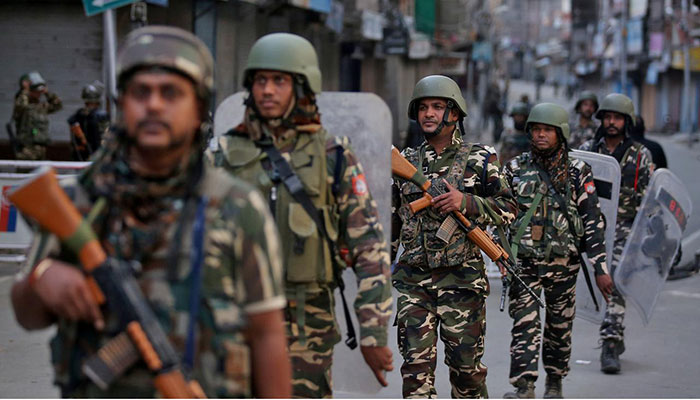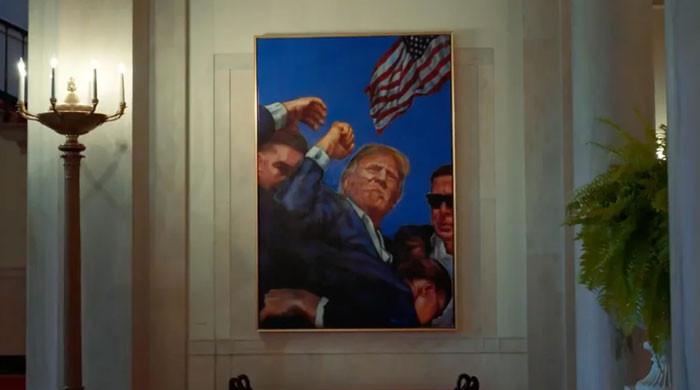Dynamics of Kashmir crisis
For the first time in their 70-year struggle, Kashmiris are affirming life through their resolve to die fighting for freedom
September 12, 2019

Modi’s move in occupied Kashmir was designed to present a political fait accompli to Kashmiris, Pakistan and the international community. But instead of achieving the stasis of a new normal, a dangerous dynamic has been set in motion.
This dynamic could lead to another conventional military conflict between India and Pakistan with the potential of crossing the threshold to a nuclear catastrophe that could cause devastation at the global level. Let us consider the main factors that could shape the trajectory of the Kashmir crisis.
The most important feature of the Kashmiri people’s struggle for self-determination is that it has reached a point of inflection in terms of consciousness and mass mobilization. For the first time in their seventy-year struggle, the Kashmiris are affirming life through their resolve to die fighting for freedom. A news video report shows a protesting crowd shouting in unison, “I am alive — Freedom! Even if I die — Freedom! On my coffin write — Freedom!”
The brutal attempt by the Indian state to suppress this aspiration has only intensified the struggle. As if the inhuman measures of a protracted curfew were not enough, witnesses have reported on camera midnight break-ins into homes, and teenagers being pulled out of their beds and mercilessly beaten by armed security personnel in front of weeping mothers. Over 2000 Kashmiris have been abducted. “The detainees have not been able to communicate with their families or meet with lawyers. Their whereabouts remain unknown. Most were taken in the middle of the night, witnesses said.” (New York Times, August 23, 2019).
This state of siege of a whole nation has been repeatedly challenged by popular protest marches. The world’s largest democracy has responded with mass arrests and firing pellets that have lodged in the eyes or chest of many a protester — their bodies a living map of state-terror. A New York Times news report shows Srinagar’s streets filled with enraged protesters in defiance of the curfew, waving Kashmir’s flags and shouting, “One solution, one solution: gun solution, gun solution”. Such resilience, such courage, such passion for freedom cannot be defeated.
The government of Pakistan has mounted a commendable diplomatic campaign to urge the international community into pressurizing the Modi government to reverse its annexation of occupied Kashmir. But these efforts so far have not provided any relief to the besieged people of Kashmir. Sooner or later when the curfew is lifted the lava of anger there will erupt. When this happens, repression by the Indian state will intensify, sharply increasing the number of dead and injured.
This is the age of instant globalization of the image. Kashmiris and Pakistanis now inhabit the same emotional space. The escalating bloodshed of Kashmiris could induce such outrage amongst the people of Pakistan that the state may have to provide practical support to the Kashmiri people.
At a political level, the logic of such a popular demand is simple: Pakistanis have been brought up to believe that Kashmir is their jugular vein in a two-fold sense: First, physically, because the main rivers that constitute the lifeline of Pakistan originate in Kashmir. Second, in an ideological sense: Kashmiris are considered integral to Pakistan’s nationhood. So, the integrity of Pakistan in terms of both state and nation is seen to depend upon defending the Kashmiris. Now that India has gone for our jugular, when else will the state take action to defend Pakistan?
The answer has been given by DG ISPR Maj Gen Asif Ghafoor during a press conference where any doubt about military action in defence of Kashmir was set at rest. He explicated the range of elements constituting the “response spectrum” to the crisis at hand, including diplomatic and military action and said: “...war would become an option by compulsion and not by choice if other elements do not succeed in stopping brutalities in Held Kashmir.”
On the other side, the Indian government has expressed an unqualified resolve to contest Azad Kashmir as the next step in their Hindutva project. For example, Union Home Minister Amit Shah declared in the Indian parliament, in Hindi, “PoK also falls within Kashmir. We will give up our lives for it”. The same position was taken by India’s Defence Minister Rajnath Singh when he said, “I would like to ask Pakistan when was Kashmir a part of you? Kashmir was always a part of India”. He added, “Truth is that Pakistan-occupied Kashmir, including Gilgit-Baltistan, has been under Pakistan’s illegal occupation.”
In the present expansionist mode of India’s emerging fascism, their grandiose goal is to achieve three strategic gains that would accrue from capturing Azad Kashmir and Gilgit-Baltistan: (i) India could appropriate a major element in Pakistan’s geostrategic advantage and associated potential economic benefits: Gilgit-Baltistan’s northern border touches the Wakhan corridor that is linked with Tajikistan (thence all of Central Asia) to the Northwest and China to the Northeast; (ii) they could through Gilgit control the main CPEC artery from Xianjing province in Southern China to the Karakorum Highway; and (iii) in so doing India imagines that it can scuttle the $64 billion CPEC programme and thereby undermine a vital component of China’s One Belt-One Road global initiative.
This rather fanciful strategic ambition could well induce precipitate military action by Modi’s government. This is because one of the features of a fascist mindset is an exaggerated sense of power derived from a belief in their racial superiority.
Hitler’s thousand-year Reich project after capturing most of Europe led to the disastrous invasion of Russia based on an over-estimation of German military power. Modi’s Akhand Bharat (Undivided India), is a similar delusion of grandeur, derived from the same idea of a superior race fulfilling its destiny of restoring the purity and organic integrity of an imagined ‘Mother India’. (see my earlier article ‘Elements of BJP’s fascism’, The News, September 2).
Clearly an attack on Azad Kashmir and Gilgit-Baltistan would be irrational. But history provides evidence that when the military actions of a state are over-determined by ideology, the rational estimation of force ratios is overruled by supra-rational, psychic drives.
So, the die is cast. The trajectory of the political struggle of Kashmiris has reached an apogee, which has become a site where the intersecting state interests of India and Pakistan could ignite. The resultant military conflict may be limited to only a brief encounter at the conventional level if world powers successfully intervene in time. But that time is now.
Of course, academic military experts would have us believe that nuclear war is improbable because there are a few ‘trip wires’ before a conventional war escalates to a nuclear exchange. But we cannot rely on this because of two reasons: first, once war begins, we enter uncharted terrain where probability estimates breakdown. Given the fact that the geographic proximity of the two neighbours reduces the flight time of a missile to less than three minutes, and given the tendency to misconstrue the adversary’s intent in the “fog of war”, and the ambiguity of “red lines”, the possibility of an unintended or even deliberate nuclear war cannot be entirely ruled out.
Recent research by climate scientists Owen Brian Toon et al together with the International Physicians for the Prevention of War (‘Bulletin of the Atomic Scientists’, vol 68, no 5, 2012) shows that a full-scale nuclear war between India and Pakistan would cause at a global level a protracted nuclear winter in which temperatures would plunge to ice age levels. It is estimated that resulting food shortages would starve to death 90 per cent of the world’s population. “It would be the end of human civilization” warns Professor Toon.
In view of this situation, the UN in particular and the world powers, in general, should urgently intervene to prevent any military conflict between India and Pakistan that could end up causing the human community to perish along with numerous other animal and plant species.
The writer is a dean at the Information Technology University Lahore.
Email: [email protected]











